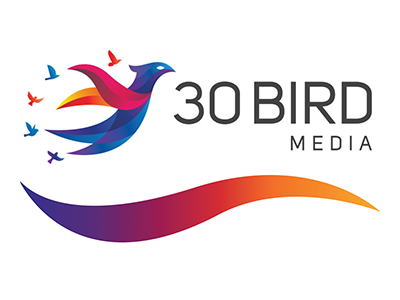 |
Business Finance: Future and Present Value of Money |
0.75 |
This course will cover how to calculate the time value of money. You will also learn how to use compounding and discounting methods to calculate the future and present value of money. |
 |
Lifting and Moving—Lesson 2 |
0.50 |
In the second session, we will discuss body mechanics and what you can do to properly train to perform in a safe manner. Final Exam: This multiple choice exam is designed to test your knowledge of the material you just reviewed. You have two attempts to gain an 80% or higher on this exam. Please take your time and answer each question carefully.
|
 |
Creating Community Collaborations |
2.00 |
Across the country, more and more communities are forming community collaborations to address the out-of-school needs of children and youth of all ages. When different segments of the community join together, share ideas, and pool their resources and efforts to create out-of-school time initiatives, children and youth benefit. What one organization or program may not be able to accomplish alone is often achievable when partnerships and collaborations among diverse groups and individuals are formed.
When school-age care professionals are knowledgeable about what it takes to create and sustain successful collaborations, they can play an important leadership role in creating out-of-school time initiatives and programs that will meet the needs of children and youth in their communities now and in the future. |
 |
Mental Health First Aid in the Classroom |
1.00 |
A student shouts in rage, “I wish I were dead!” Is he expressing suicidal ideation? A student quickly covers cut marks over her left forearm. Should we approach her or respect her privacy?
The National Alliance on Mental Illness data show that one in five adolescents between the ages of 13 and 18 will experience a severe mental illness, and only 20 percent will receive treatment. We know, then, that our students are coming to us with mental health needs that are greater than ever before. This can feel overwhelming, especially when we want to help our students achieve to their fullest potential and are not sure how to.
The good news is that basic mental health first aid can offer practical, valuable tools. We don’t need to be a cardiac surgeon to perform CPR, and sometimes CPR can save a life. Similarly, we don’t have to be a licensed mental health professional to provide basic mental health first aid in the classroom.
|
 |
Safety and Survival in an Active Shooter Event in School Settings |
0.75 |
Welcome to Safety and Survival in an Active Shooter Event in School Settings. Recent national tragedies in schools remind us that the risk is real: an active shooter incident can happen in any place at any time in any school district. The best way to make sure you are safe is to prepare ahead of time and be ready.
Warning: Some of this content may be disturbing, if you need to take a break, please do so. If you exit and then come back into the course later, it will resume where you left off. |
 |
PMP® Certification: Passing the 2021 Exam - Exam Prep |
1.00 |
Exam Prep to accompany 30 Bird's PMP® Certification: Passing the 2021 Exam course. |
 |
Introduction to Eldercare |
2.75 |
This course will equip you with the essential knowledge to navigate the unique challenges and opportunities that come with caring for older adults. |
 |
Sales: Qualifying |
0.50 |
In this course, you will learn how to improve your listening skills to better understand customers’ needs and decision-making criteria. You will also learn how to use questioning techniques to help customers recognize the benefits of your products and services. |
 |
Cultural Diversity in School Settings |
1.00 |
This course contains definitions of diversity, equity, and inclusion (DEI) and the role DEI plays in the school setting. Embracing diversity, equity, and inclusion benefits everyone within a K-12 institution: faculty, staff, students, and families.
Learners will reflect on the different elements of their own identity and how that impacts their perception of others. This course will also discuss the role of bias in the school setting. |
 |
Exploring Four Areas of School-Age Development: Physical Development |
0.50 |
One of the most helpful ways to gain an understanding of the needs and interests of youth between 5 and 12 is to examine their development from four different perspectives: 1) Physical Development, 2) Cognitive Development, 3) Social Development, and 4) Emotional Development. In this course, we will explore the physical development perspective. |
 |
Project Management - Intermediate: Risk Analysis, Response, and Control |
1.00 |
This course will cover how to identify the goals and benefits of risk assessment and follow the qualitative risk analysis process and how to use the quantitative analysis techniques and draw a decision tree. You will also learn how to follow the risk response process and identify the categories for possible risk response plans and how to use the methods of monitoring and controlling project risks and identify the outcomes of monitoring and control. |
 |
Customer Service: Customer Service Skills |
1.00 |
A great customer service representative should have skills in three key areas: organization (time and stress management), motivation (letting customers know you care), and communication (vocal, verbal, and visual). The core strength of a good customer service rep is sound knowledge of the organization’s products and services. |
 |
Hazard Communication Basic |
1.00 |
This course covers the basics when it comes to hazard communication. The topics will range from the Hazard Communication Standard to the labeling of hazardous materials. |
 |
Fire Behavior Basics (NYS02) |
1.00 |
This lesson introduces the basic chemistry and physics of fire behavior. The lesson defines combustion, reviews the fire triangle and components of the fire tetrahedron. The stages of fire develop and accompanying characteristics are discussed with a focus on heat transfer and how it plays a part in fire develop. The lesson is evaluated using a brief quiz covering the material included in the lesson. |
 |
Capacitación sobre seguridad en andamios y escaleras de mano (Spanish) Scaffold and Ladder Safety Training |
0.50 |
Este curso cubre cómo corregir o eliminar peligros de caídas relacionados con el uso de andamios y escaleras en el lugar de trabajo y comprender los requisitos de la OSHA referentes a seguridad en andamios y escaleras. |
 |
Project Management - Basic: Scope Definition, Verification, and Change Control |
1.50 |
This course will cover how to identify the process and benefits of scope definition and verification, and develop a work breakdown structure (WBS) and work package. You will also learn how to identify the types of information that stakeholders need in order to verify a project’s scope, and determine the timing of scope verification. You will be able to better understand how to control changes in project scope, identify the benefits of a scope change control system, and describe why it’s important to create a project database. |
 |
Motivation: Identifying, Planning, and Implementing: Using What You've Learned |
0.50 |
In life, to be a successful, you must have a plan. Napoleon Hill, author of Think and Grow Rich, said, “Create a definite plan for carrying out your desire and begin at once, whether you ready or not, to put this plan into action.” This course has provided you with the information and—we hope—the inspiration to improve your motivational skills and work toward personal success. The final two steps are up to you: You must implement what you have learned and continue to work on improving your skills.
In this course you will learn to: work toward improving your motivational skills by using the 21-day habit and satori, and use resources, including websites and books, to continue working on your motivational skills. |
 |
Project Management - Advanced: Project Integration and Plan Development |
0.50 |
This course will cover how to measure data during project integration and differentiate between project and product life cycles. You will also learn how to identify the importance of developing a project plan, the elements of a project plan, the key input required for project plan development, and methods used in project plan development. |
 |
OSTPD - Supporting Attendance through After School Programming |
1.00 |
This training will cover a number of areas regarding how after school programs can support youth attendance in school. By looking at and exploring the connection between after school programming and attendance in school, we see how after school programming supports attendance at school as well as how to coordinate with the school in order to maximize the positive impact of after school on school attendance through collaboration. |
 |
Grammar Skills: Word Choice |
1.00 |
This course covers how to choose the appropriate words for clear communication and how to recognize and use frequently misused words correctly. You will also learn how to avoid common spelling errors and correctly attach prefixes and suffixes to words. |
 |
Zoom Meeting Basics |
0.50 |
Zoom is a web-based video conferencing tool with a local, desktop client and a mobile app that allows users to meet online, with or without video. Zoom users can choose to record sessions, collaborate on projects, and share or annotate on one another’s screens, all with one easy-to-use platform. In this course we will go through the major features of Zoom Meetings. |
 |
Paraprofessional Math Skills 1: Number Sense and Basic Algebra |
3.00 |
This course covers Paraprofessional Math Skills: Number Sense and Basic Algebra. It is just one out of three Paraprofessional Math Skills courses, and one out of eight ParaPro prep courses that will prepare you on K-12 topics. This course will help you develop your knowledge of these mathematical concepts and help you apply them to abstract and real-life situations. After taking these prep courses, you should be prepared for the ETS ParaPro Assessment. This course can be taken as a stand-alone learning event, as part of a broader paraprofessional curriculum, or in preparation for the ParaPro Assessment.
After completing this course, you will be able to:
Evaluate basic addition, subtraction, multiplication, and division expressions with whole numbers, fractions, and decimals
Recognize multiplication as repeated addition and division as repeated subtraction
Interpret mathematical symbols
Understand basic mathematical terms
Recognize the position of numbers in relation to each other
Understand equivalent forms of a number
Understand place value for whole numbers and decimal numbers
Compute percentages
Understand basic concepts of exponents
Use the order of operations to evaluate math expressions
Use mental math and solve problems by estimation
Solve word problems
Solve one-step, single-variable linear equations
Understand the sequence of numbers |
 |
Scaffold and Ladder Safety Training |
1.00 |
This course covers the importance of ladder and scaffold safety, common hazards when using scaffolding and ladders and how to prevent serious injury. |
 |
Coping with Crying (CDA 1 & 3) |
2.00 |
Babies cry to communicate. In fact, sometimes it's the only way babies can communicate. Coping with crying can be a challenge, especially for people who have little or no experience care for infants. Learning to cope with crying is critical, as infant crying is the number one trigger for shaking a baby. In this course, we will learn about Shaken Baby Syndrome, and about ways to cope with a crying infant. This course is designed to be part of a Child Development Associate (CDA) Credential™ curriculum. It covers CDA Subject Area 1, Planning a Safe and Healthy Environment and CDA Subject Area 3: Supporting Children's Social and Emotional Development. This course can also be taken as a stand-alone learning event, or as part of a broader early childhood education curriculum. |
 |
Adult and Child CPR (Corrections) |
2.00 |
In this course, you will learn how to properly perform Adult and Child CPR that may someday enable you to save someone's life. |


























